About
A RETROSPECTIVE
BY DAVID CHARVET AND RICHARD KAUFMAN
1930s
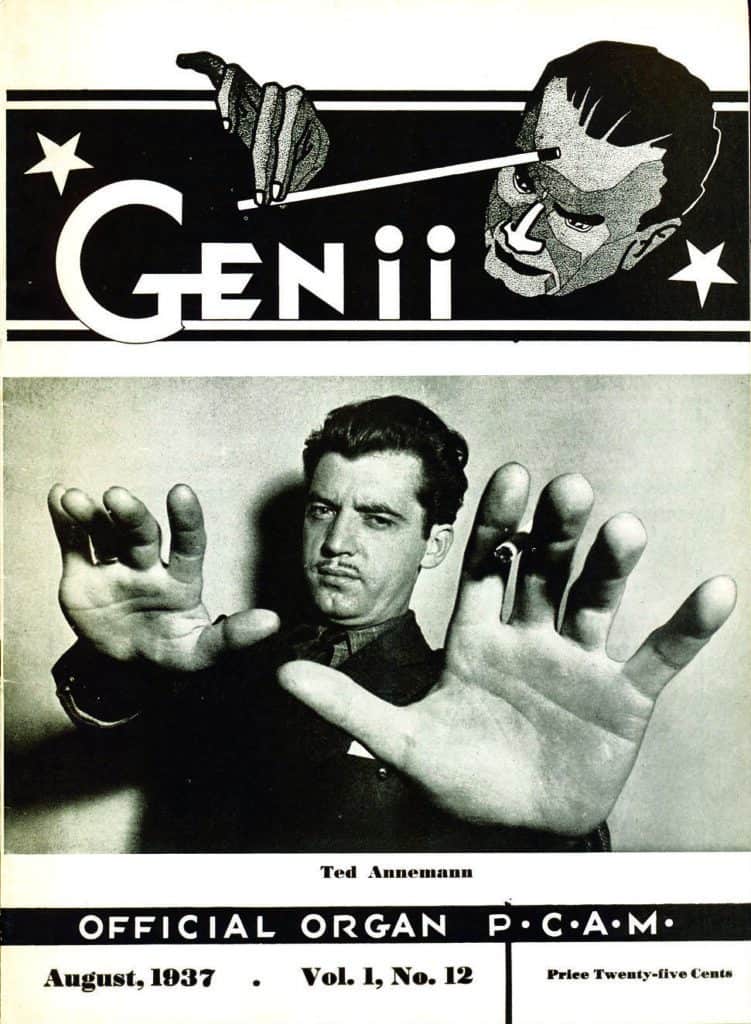
When Genii burst upon the magic scene in September of 1936, Bill Larsen, Sr., had put his heart, soul, and bank account at stake in much the same way that David did when he faced the mighty Goliath. But in this case, “Goliath” was John Mulholland’s Sphinx; a long-established independent journal of the art, brought to its zenith in the 1920s by Kansas City physician, Dr. A.M. Wilson.
Larsen, together with his close friend, T. Page Wright, were frequent contributors to The Sphinx when it was under Wilson’s hand. Larsen had hoped to purchase The Sphinx, but after Wilson’s death in February 1930 it was sold to New York magician John Mulholland. Larsen watched as the journal, in his opinion, deteriorated from the factual presentation and reporting of the magician’s art, into a glossy “Harper’s Bazaarish” (to use Larsen’s own words) magazine.
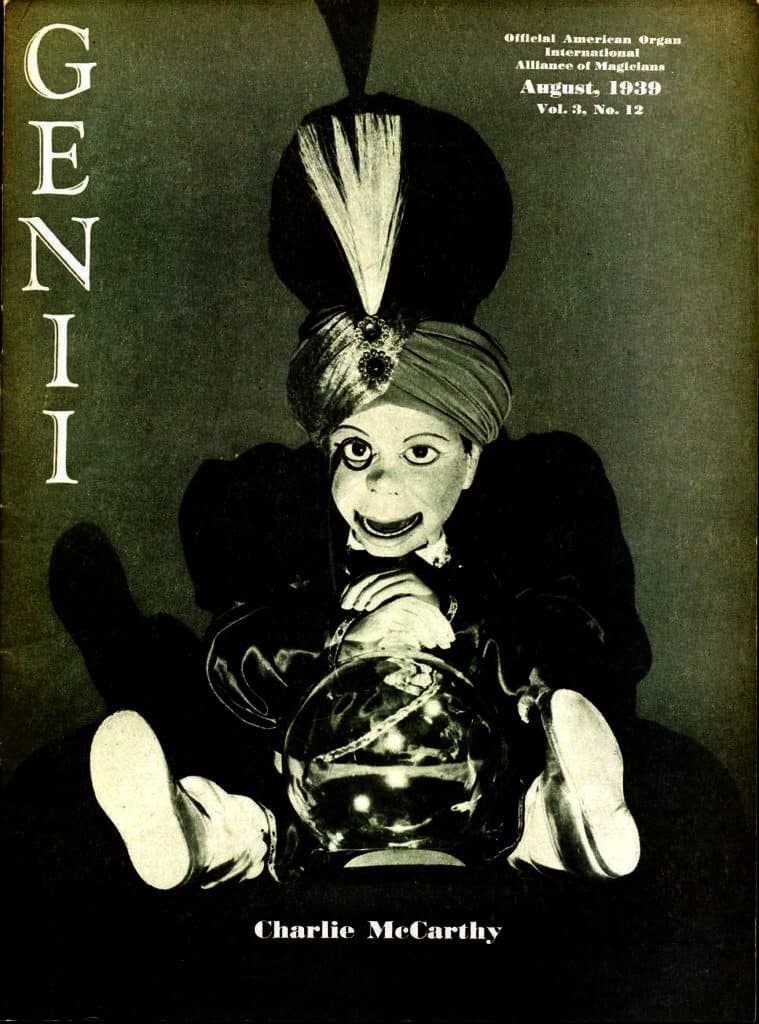
Certainly, in New York City, the scholarly Mulholland felt that the small upstart on the West Coast would never have the impact of the venerable Sphinx. But by 1937, when Genii subscriptions increased exponentially, Mulholland must have realized that Genii would never be constrained to the small bottle from which it sprang.
The 1930s were an extremely fertile period for magic. While the big touring shows, including those starring Howard Thurston and Harry Blackstone, among others, were still criss-crossing the country, parlor and close-up magic, in particular, were undergoing explosive growth that would foretell the future of the art.
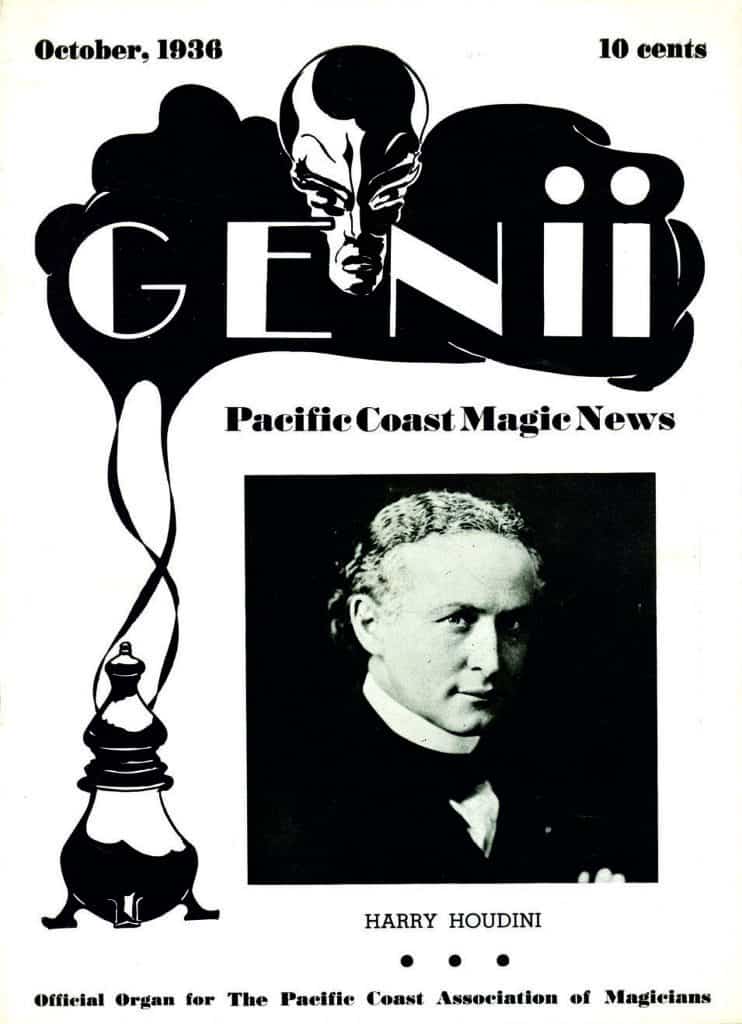
Bill Larsen, in his thought-provoking editorials, always challenged complacent magicians to modernize their ways of thinking in all areas of magic to suit the new demands of the entertainment-buying public. Larsen’s influence in the areas of mentalism, close-up magic with cards and other props, and stage magic have been greatly underestimated by magicians of later generations.
Readers responded to Larsen’s editorials and his magazine, with its qualified contributors and practical tricks; and by 1940, the subscriptions had blossomed to several thousand throughout the world.

The 1940s
The first half of the decade found the world involved in war. Despite this, Genii was there every month to bring reassuring news of home to magicians in the trenches, and words stateside from those on the front lines, whose common link was the art of magic.
In 1942, the Larsens purchased Floyd Thayer’s Magic Company. Again, Bill’s desire to improve the art pervaded every part of the business. He eliminated many effects from stock that he felt were antiquated in favor of those more suited to a contemporary audience. But, rather than turn Genii into a “house organ,” the magazine remained steadfast in its independence. Bill limited the amount of advertising space given to Thayer and kept the interest of his readers foremost in mind. With the magic shop, shows, lectures, and later involvement with the legal profession, Larsen was finding less time for Genii; but with Gerrie Larsen as executive editor and Bill as editor of magic, the magazine prospered during the decade.
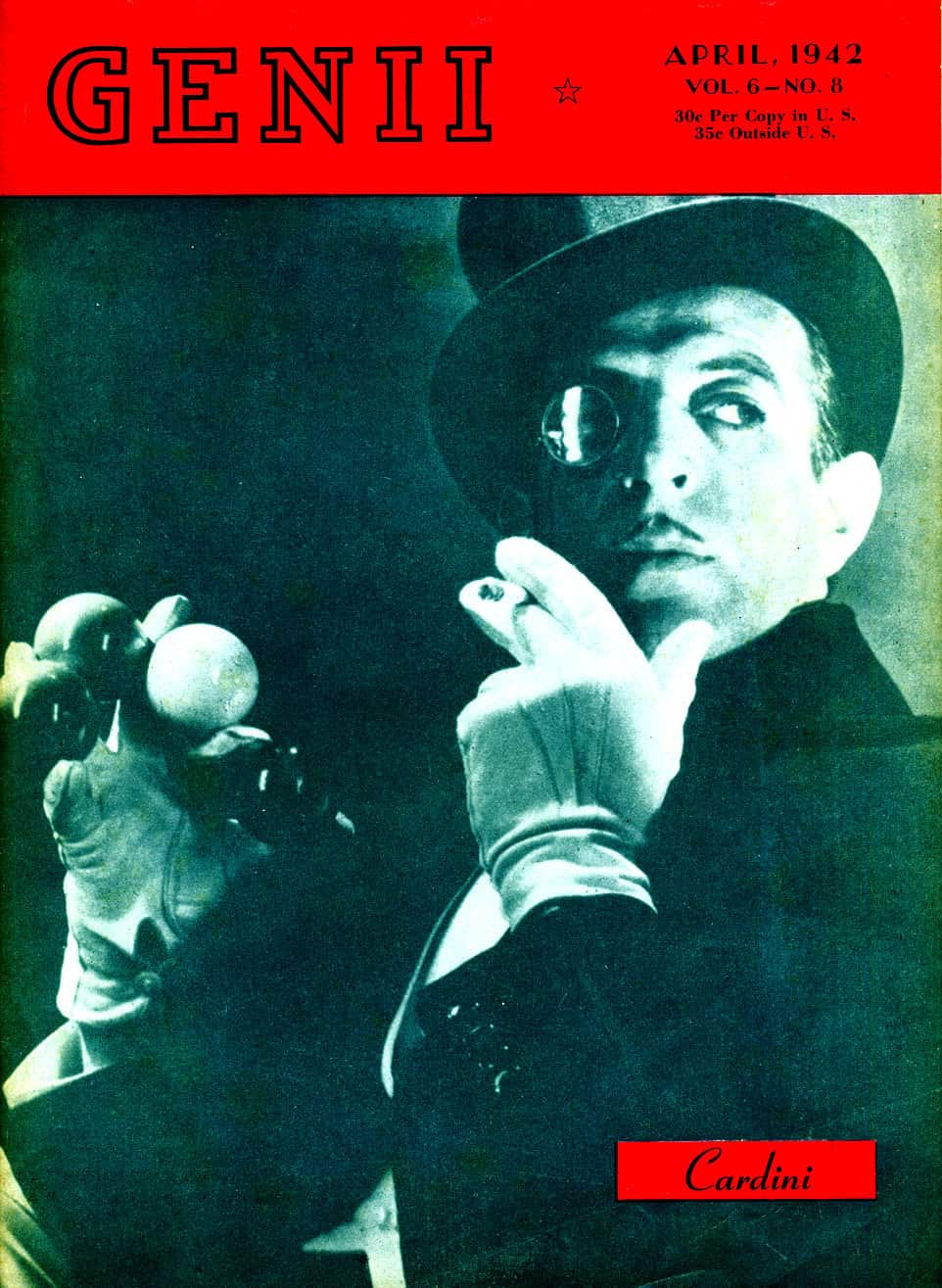
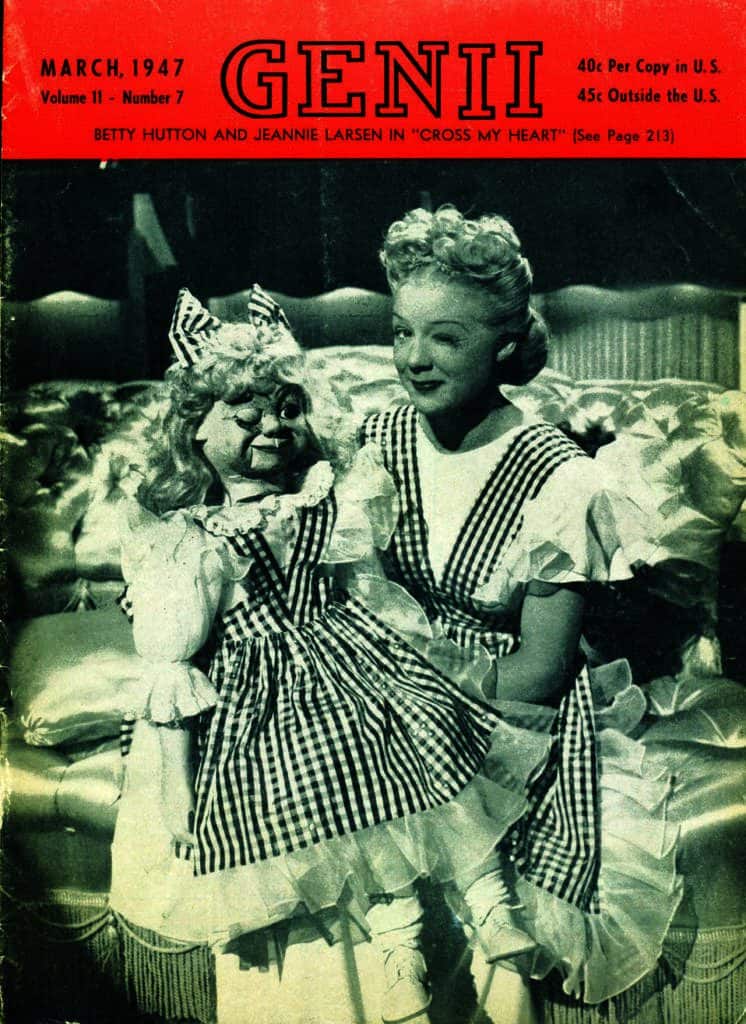
In 1941, the S.A.M., whose insert M-U-M had previously been carried in the pages of The Sphinx, transferred their contract to Genii, greatly expanding Genii’s readership while diminishing that of The Sphinx. Then, with the end of the war in 1945, many soldiers who had taken Genii with them into the battlefield were back home again as regular readers. And later, in November 1949, Genii absorbed Walter Gibson’s The Conjuror’s Magazine, thus gaining a subtitle. By the end of the decade Genii had become the preeminent magazine devoted to magic.
The 1950s
The Larsens sold Thayer’s in 1950. In the April 1952 issue of Genii, Bill Larsen, Sr., made a momentous announcement that would raise the profile of magic worldwide.
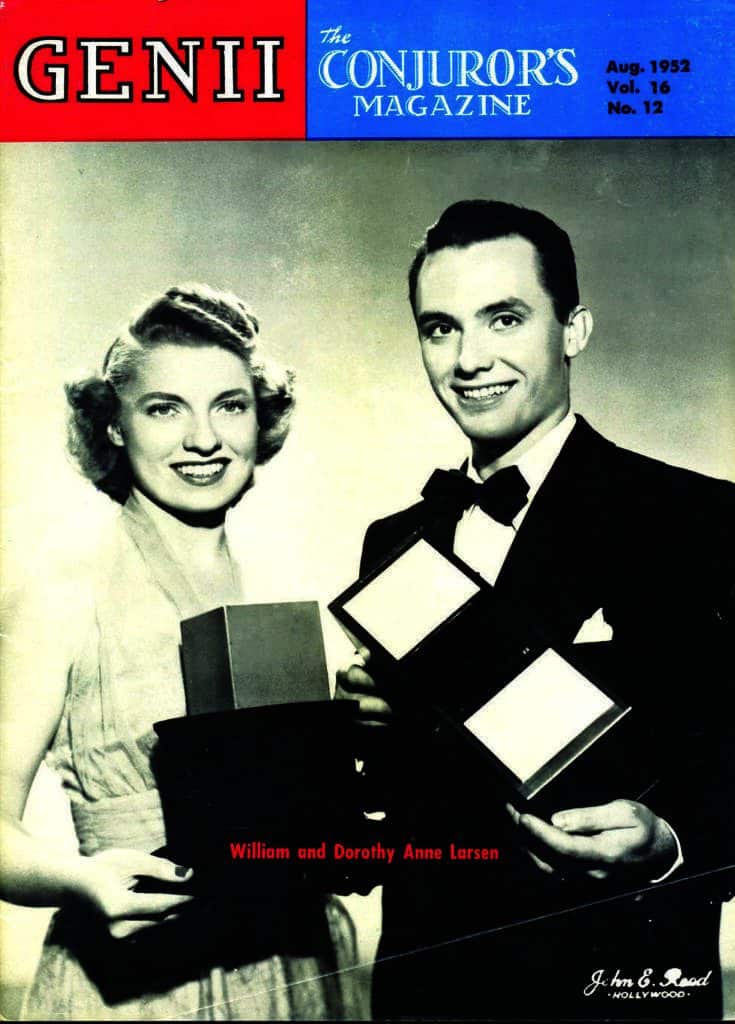
“Dear Fellow Magician … There has been organized, and there is now functioning, a new international magical order, dedicated to the betterment and promotion of the magical arts; designed to bring about closer relation between the devotees of the conjuring crafts. It is called:
“The Academy of Magical Arts and Sciences. … Eventually, there will be classes and degrees of membership: ‘teaching fellows,’ ‘master fellowships,’ ‘literary fellowships,’ ‘inventive and design fellowships,’ et cetera. There will also be yearly awards—many of them. … I feel that The Academy of Magical Arts and Sciences will do much to publicize magic and magicians. We shall endeavor to make it, and its activities, good newspaper and magazine copy, not for us, but for you. Your Fellowship in the order should heighten your stature in the craft, unless, of course, you are already numbered among the few who can achieve no greater crests.

“For the present the Academy of Magical Arts and Sciences will function under the guiding hand of a local board of directors of which I, temporarily, am the chairman. Eventually, by the process of a general election, there will be chosen a president of the Academy. There are many details to be taken care of. But the important thing is that the Academy is now in existence and functioning and you, if you are a subscriber to Genii, are a full fledged Fellow of and in the Academy. There will be plenty of ‘follow ups’ in days to come. Recipients of Academy awards will be chosen from all parts of the country, nor from just the large cities. Awards will be given for many reasons … . An ‘unknown’ is as apt to win as is a professional of long standing and wide reputation.” And within a few issues awards were being given by the Academy.
With these revolutionary words, William Larsen, Sr. in one broad stroke created an entity that changed the world of magic, not only for magicians, but also the view of the art by the lay public. But it would take eleven years for his dream to be fully realized. He envisioned, you see, a grand club house for the Academy.
Then, on July 5, 1953, Bill Larsen, Sr., died suddenly at the age of 48. Many predicted it would be the end of Genii and The Academy of Magical Arts and Sciences, but Gerrie and sons Bill, Jr., and Milt rallied to continue Bill Sr.’s dream.

When John Mulholland unceremoniously shuttered The Sphinx in the fall of 1953 so he could secretly work with the C.I.A. on the project MK Ultra, Genii was firmly in control of the magic scene; although magic was having a hard time holding its own.
General interest in magic had begun to decline. With the 1950s postwar baby boom, many fathers had traded their magic wands for diaper pins. But subscriptions held steady, and Bill, Jr. kept his father’s policies in effect: honest journalism, fair reporting, excellent tricks, and articles. They keep Genii going through the lean years.
The 1960s
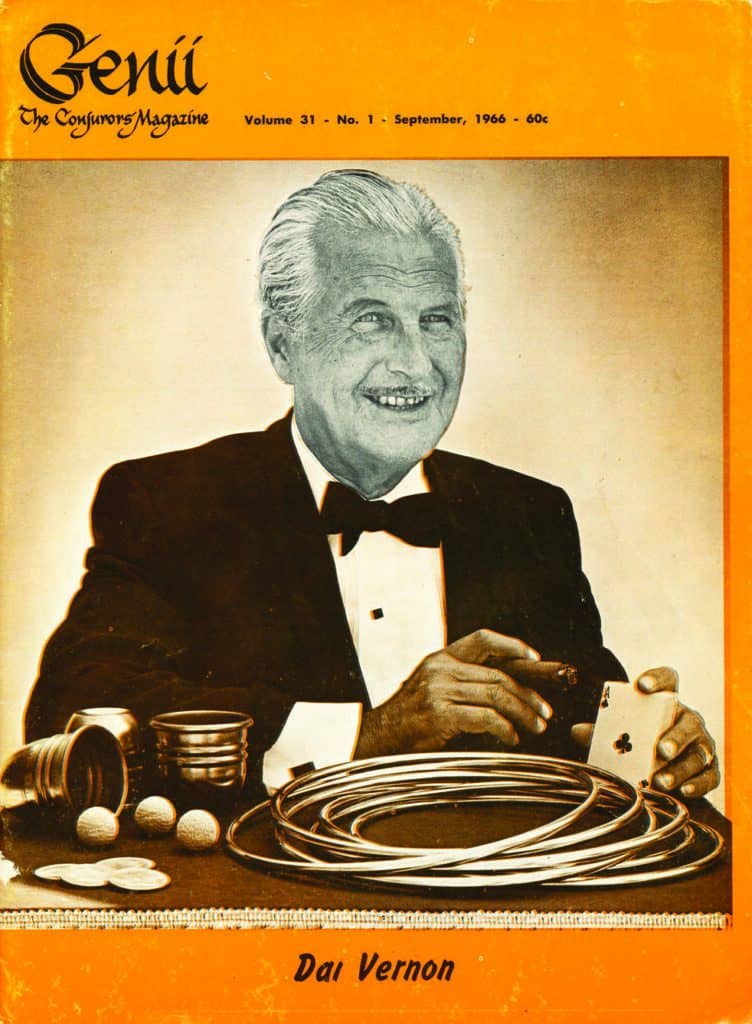
The full impact of television was being felt in the early 1960s. Bill and Milt both became involved in the industry, the former as a producer and the latter as a writer. Television brought the United States its first new magic star in many years: Mark Wilson, whose show Magic Land Of Allakazam brought a weekly magic show into the homes of enthusiast across the country. All the while, Genii continued, now with Bill Larsen, Jr. firmly established as editor.
In addition to their other activities, Bill and Milt had been working quietly to bring their father’s ultimate dream to life: a club house for The Academy of Magical Arts, now dubbed The Magic Castle. In 1962, after much work by Milt, chief renovator and carpenter, the Lane Mansion on Franklin Avenue in Hollywood had been transformed into a place truly magical and which would come to be known as “home” to magicians around the world. While Milt continued to tinker and greatly expand the club over the coming decade, it was Bill, Jr. and his delightful wife Irene who ran the club and became magic’s unofficial ambassadors to the world.
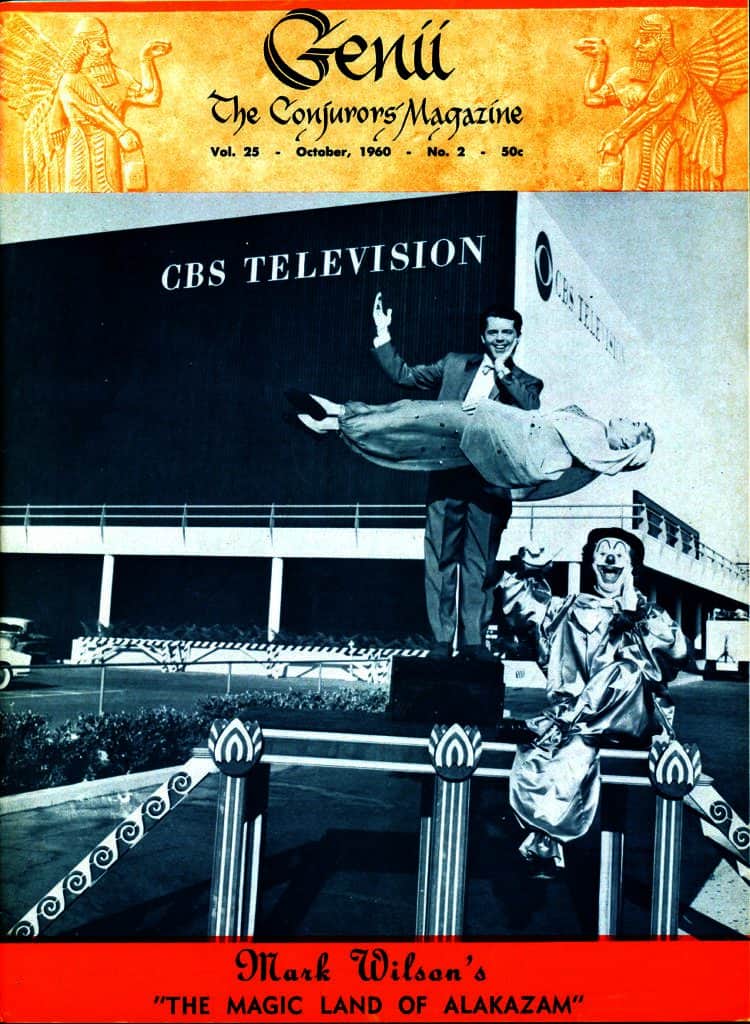
A synergy developed between Genii, The Academy of Magical Arts, and The Magic Castle, with the endlessly exciting news of the growth of the club, and the arrival of magicians Jay Ose, Tony Giorgio, Albert Goshman, and then, in 1963, Dai Vernon, regularly reported in the pages of Genii. The magazine was reinvigorated and considered a must-read by every magician around the world with its coverage of international conventions often attended by Bill and Irene. The appearance of columns by Dai Vernon and Charlie Miller attracted the elite of magic into its readership.
In the mid-1960s a new group of young magicians moved to Southern California to study with Dai Vernon, bringing Larry Jennings, Bruce Cervon, and many others, who also became contributors to Genii.
The 1970s
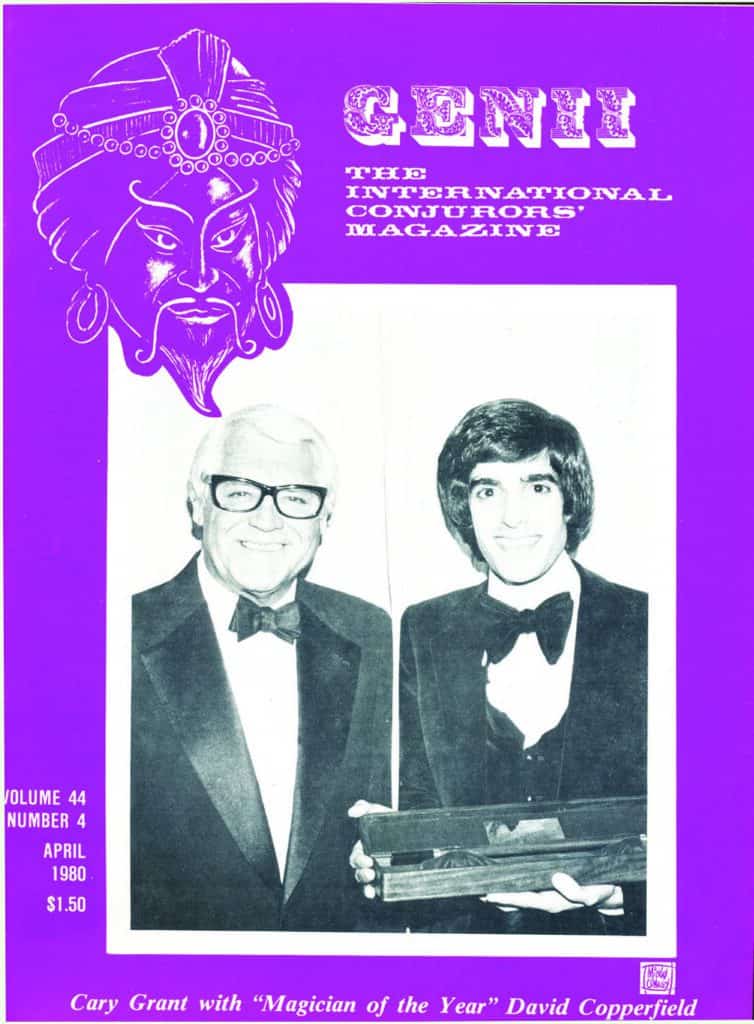
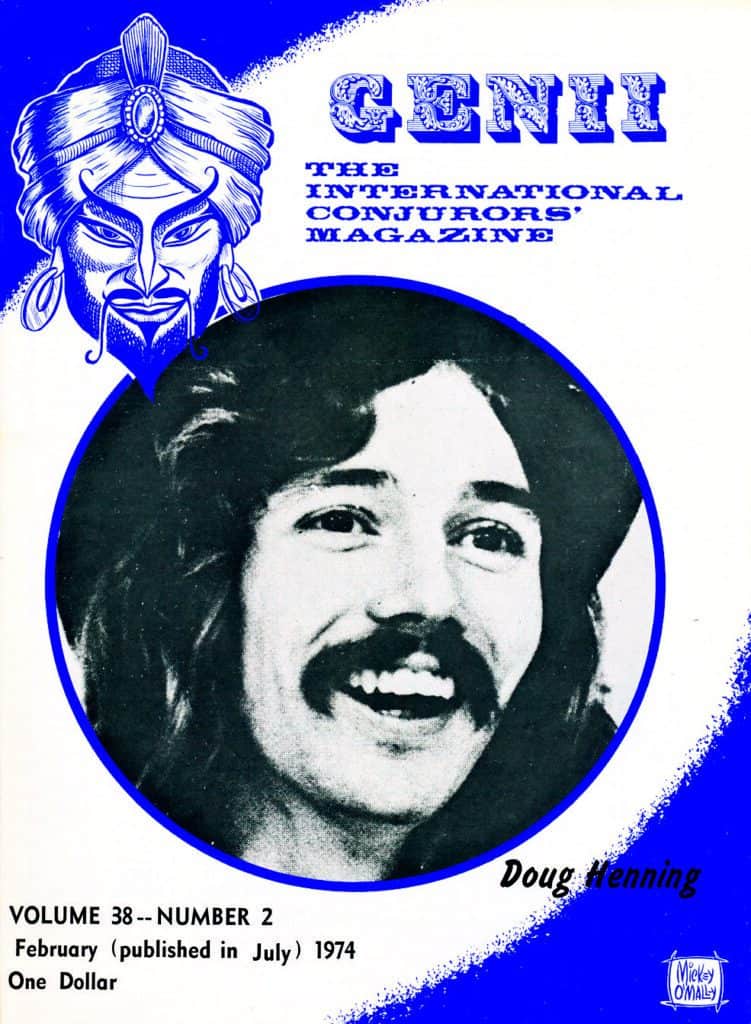
As Mark Wilson had done the decade before, in the 1970s, Doug Henning brought a unprecedented public visibility to the art with his performance in The Magic Show, and many network television specials. Genii was there, keeping pace with the times and informing magicians of the current news with an even greater international outreach.
Midway through the 1970s David Copperfield began his ascent, on the way to being the most famous magician of the modern era, with an eventual 17 TV specials.
And it was not only on television: the 1970s saw the dawn of an era with a multitude of magicians performing in Las Vegas that continues to this day, and Bill and Irene were right there with Siegfried and Roy and Lance Burton.
The 1980s and 1990s

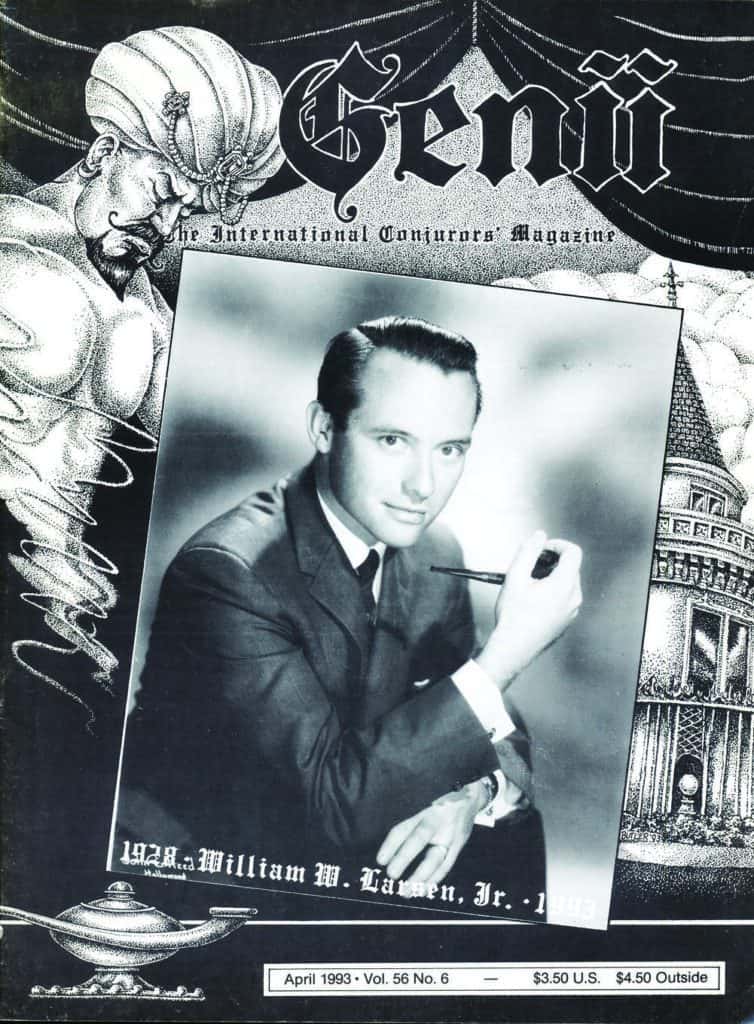
The rebirth of the large touring illusion show of the past, modernized by the likes of Henning, Copperfield, and Blackstone, Jr., kept magic in the minds of the theater-going public. Siegfried and Roy continued to thrill capacity crowds in Las Vegas. And still, Genii was there.
In 1993, Bill Larsen, Jr., died at age 64. By 1990 the duties of Genii had been taken over, first, by his son Dante, and then shortly thereafter by daughter Erika. She remained editor, greatly assisted by Max Maven, until 1998.
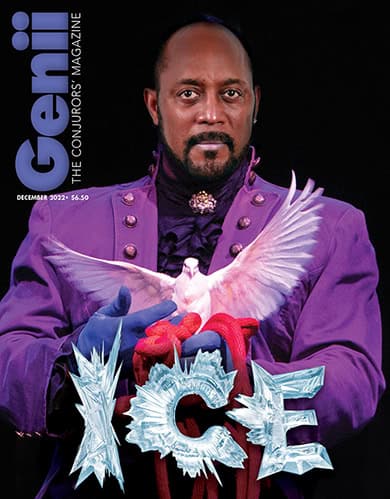
2000s
Irene Larsen made the decision to sell Genii to famed author/illustrator/publisher Richard Kaufman. With his wife Elizabeth as art director, Genii began a new life in January 1999. For the past 25 years the Kaufmans have brought Genii to new heights as a full-color, 100-page glossy monthly with an emphasis on long-form journalism, something never seen in magic before.
Genii continued its reign as the largest-selling magazine in magic throughout the decade, enlarging its reach by making all members of The Academy of Magical Arts subscribers to the magazine, coming full circle with William Larsen, Sr.’s original intentions.
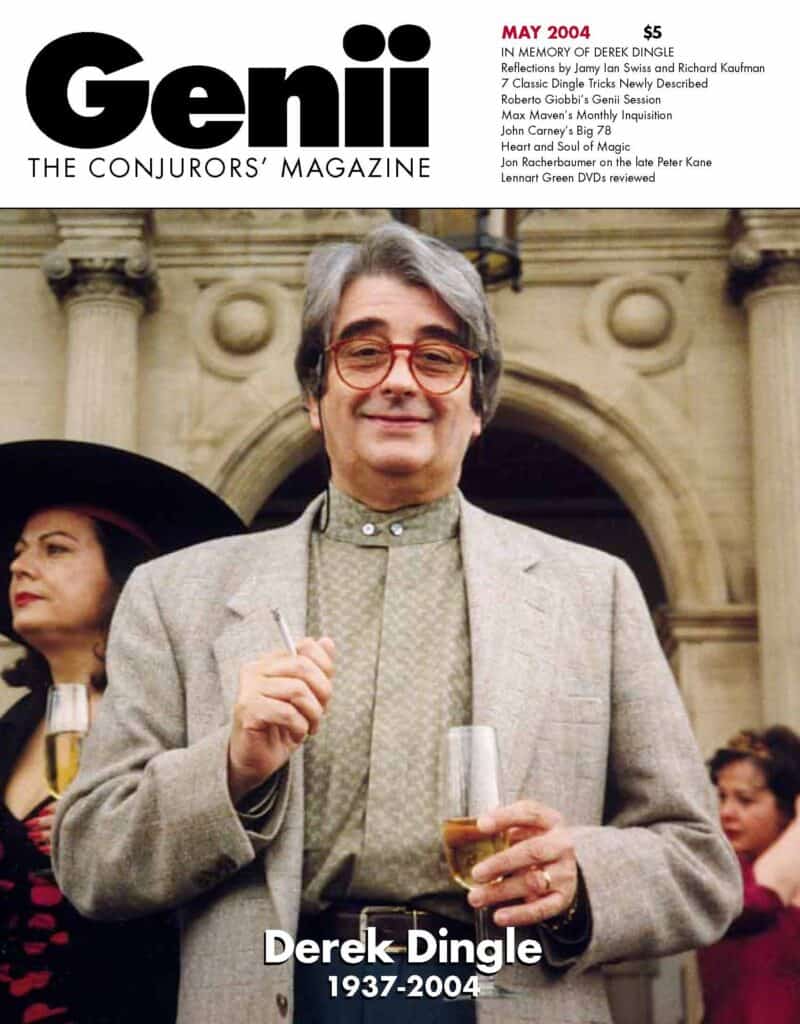
In 2016 Genii was sold to Randy Pitchford, CEO of Gearbox Software. As a life-long amateur magician, and grand-nephew of the legendary Cardini, Randy was the perfect person to carry the legacy of Genii through the 21st century. His subsequent acquisition of The Magic Castle has reconnected the legacy of the Larsen family’s greatest accomplishments, and it has only been through his unwavering support that Genii has continued publication while thousands of newspapers and magazines have withered due to the tsunami of free information communicated over the internet.
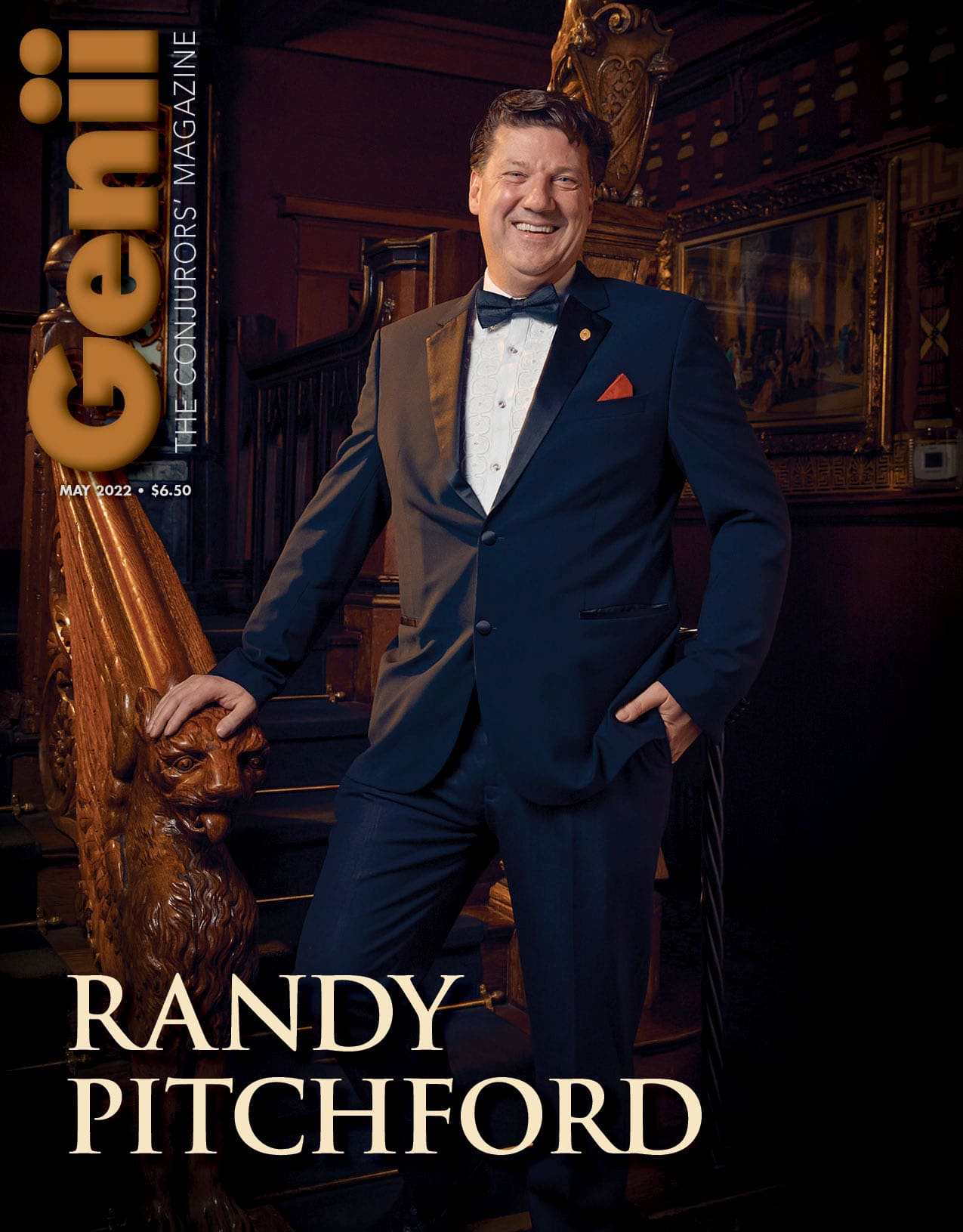
That any magazine survives for nearly a century, especially in such a closely-knit fraternity as the art of magic, is testimony to one thing: dedication.
The entire history of magic for the last three-quarters of a century is contained in the pages of Genii. And, like any energetic entity, Genii will continue to evolve. Staff will change, different magicians will fill its pages, and there will be a closer association with The Magic Castle. And still, Genii will continue. It is now the longest-published magazine devoted to magic in history, and with great enthusiasm it truly feels like we are only getting started.

